Microscope Activities, 27: The Divisible Objective
In the past, Hooke College of Applied Sciences offered a microscopy workshop for middle school and high school science teachers. We thought that these basic microscope techniques would be of interest not only for science teachers, but also for homeschoolers and amateur microscopists. The activities were originally designed for a Boreal/Motic monocular microscope, but the Discussion and Task sections are transferable to most microscopes. You may complete these 36 activities in consecutive order as presented in the original classroom workshop, or skip around to those you find interesting or helpful. We hope you will find these online microscope activities valuable.
EXPERIMENT 27: The Divisible Objective
Goal
To learn how to recognize and use divisible objectives.
Level
Basic
Materials Needed
Divisible objectives (Note: not all microscopes come with divisible objectives, but this Experiment will help you recognize this type of objective if your microscope comes equipped with one).
Procedure
Read this Experiment, and then look closely at all of your objectives to determine if they are of the divisible type or not.
Discussion
Figure 27-1 is a photo of a divisible objective. Most objectives are not of the divisible variety, and those that are are not specifically designated so, as is the example in Figure 27-1.
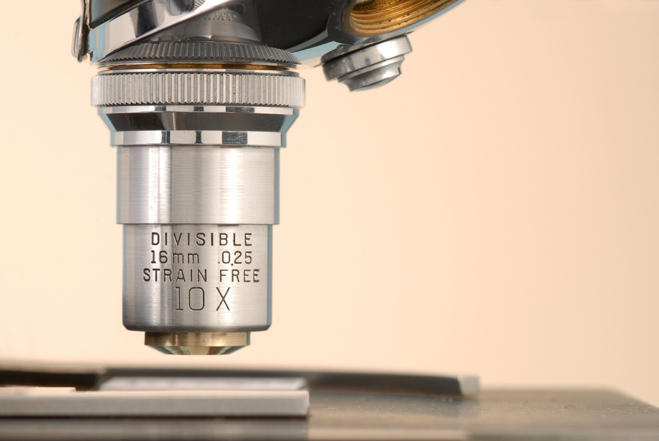
What is a divisible objective? A divisible objective is one that can be taken apart or converted so as to provide more than one magnification—much like a two- or three-lens pocket magnifier in which each lens provides an individual magnification, but when combined with one or two additional lenses the total magnification is much higher.
Why make a divisible objective? Early traditional microscopes were supplied with a single objective which was screwed into the bottom of the body tube. To achieve different magnifications—higher or lower—the objective in use was unscrewed, and replaced with one of different magnification. For the sake of ease and efficiency the nosepiece was then introduced. The traditional nosepiece was normally of two-place or, more commonly, three-place. In this way, up to three objectives could be mounted on the rotating nosepiece. Typical traditional magnifications included 10X, 40X, 100X oil. A 4X “scanner” was often desirable, and usually replaced the 100X oil for a 4X 10X, 40X combination. Of course some users wanted all four objectives, 4X, 10X 40X, 100X oil. For this market demand four-place nosepieces were manufactured. The divisible objective accommodates the owners of three-place nosepieces who want all four magnifications. The divisible objective shown in Figure 27-1 is a 10X objective, but the front half can be unscrewed off, leaving the upper half, which is now a 4X objective (Figure 27-2). In this case, the objective is engraved “DIVISIBLE.”
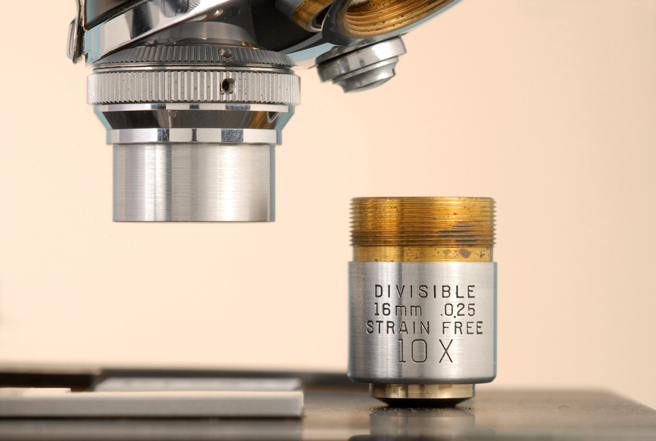
In most cases divisible objectives are not so marked, but their divisible nature is hinted at by the presence of knurled rings around the objective. For example, look at the single objective on the microscope in Figure 27-3, and notice that it has three knurled rings; there are three sets of lenses in this objective. The combination of all three lens sets provides the objective with its highest magnification (about 40X).
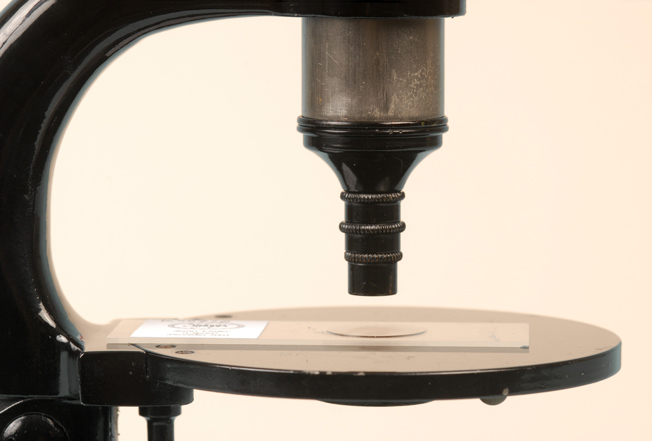
If the lowest lens set is removed—as shown in Figure 27-4—the upper two lens sets now act as a medium-power objective (about 10X).
And when the middle lens set is also removed (Figure 27-5), the remaining lens set now acts as a low-power objective (about 4X).
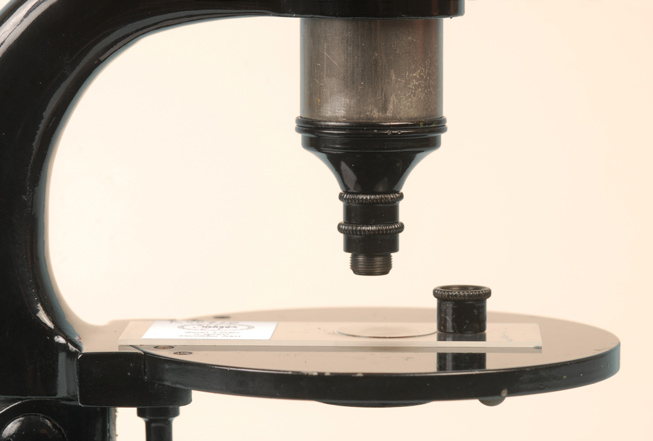
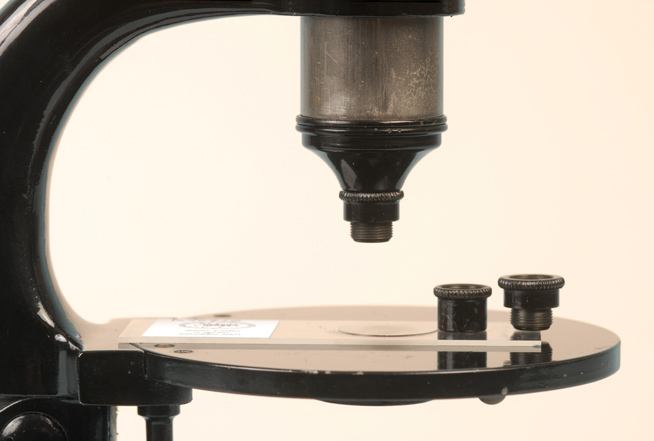
In at least one example the change of objective magnification is accomplished through the use of a swing-in swing-out lens. Figure 27-6 shows such an objective with its front lens in its lowered position, where the complete assembly acts as a medium power objective.
Notice the knob with the knurled rim; this is what is used to swing the front lens out of the optical path, leaving the upper lens elements to act as a low-power objective (Figure 27-7).
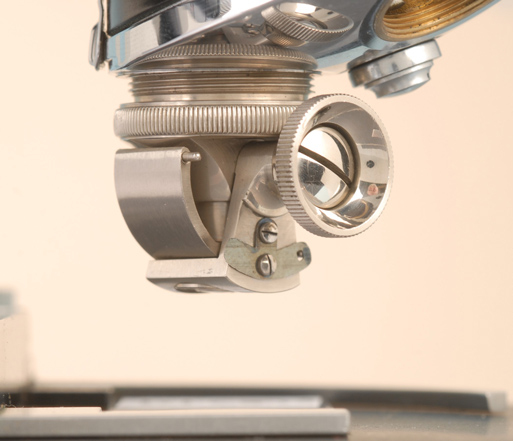
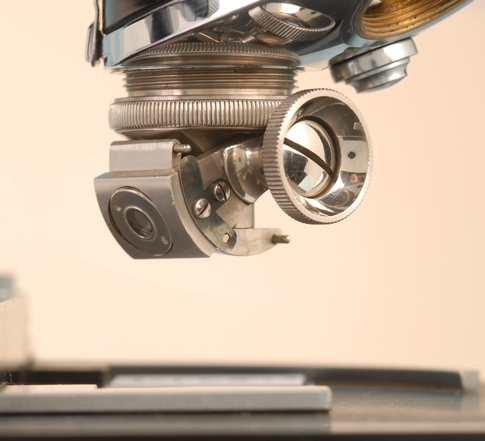
In addition to divisible objectives for obtaining multiple magnifications from a single objective, there are also available “variable magnification” objectives which incorporate an internal zoom system, much like camera zoom lenses. These kinds of objectives—usually in the lower magnification ranges—are particularly useful for photomicrography, where variable intermediate, rather than stepped magnifications, are desired to just fill a frame.
Task
Examine the objectives on your microscope to determine whether they are of fixed, multiple, or variable magnification. If you find that you do have a divisible objective, determine the magnification of each combination (See Experiment 10), the free working distance (FWD) of each combination (Experiment 5), and determine the diameter of the field of view for each combination (Experiment 9).
Comments
add comment